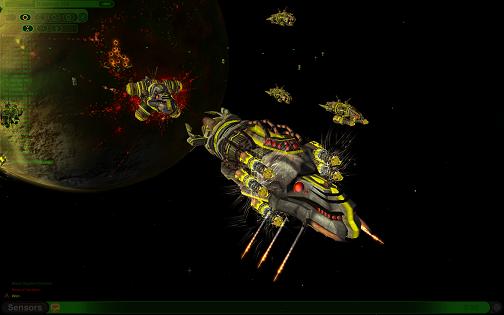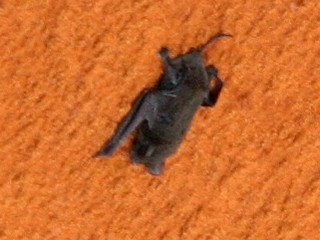
There’s no denying that Kerberos Productions has their priorities right: in a space-based 4X game, the big draw are the ships and Sword of the Stars, with all of its expansions added in, delivers that in spades. Want to build a missile boat with launch tubes dotting its entire surface? You can do that. How about an impactor ship that can fire powerful long-range rail cannons but whose arc of fire is limited to enemies directly in front of it? You can do that too. As of the A Murder of Crows expansion, you can even build drone carriers if fielding a swarm of carrier-based fighters is your thing.
As I’ve previously mentioned, Sword of the Stars is best understood as a space-based version of the Total War games. While the turn-based strategic layer is present, it’s extremely streamlined and designed to be able to be played quickly in order to facilitate multi-player sessions. A campaign game takes place in a randomly generated galaxy and you’re given a huge variety of options on what your galaxy looks like, including total number of stars, average distance between stars and the overall shape of the galaxy. The galaxy itself is in true 3D, which can be hard to make sense of since you’re going to have to constantly pan and rotate the galactic map. If that’s a problem, simply choose a disc-shaped flat galaxy to make things more or less 2D.
Continue reading A Game: Sword of the Stars (Ultimate) + Argos Naval Yards →

This has got to be the funniest item in the news all week. A bat apparently was clinging onto the side of external fuel tank of the space shuttle Discovery during its take-off on Sunday. Unfortunately everyone is pretty sure the would-be space traveller is now dead.
Four articles this month, one on the extremely exciting findings by the Cassini-Huygens mission to Enceladus, one on a somewhat weird life form found inside the remains of the Chernobyl nuclear reactor and finally two somewhat similar cases of emerging risks to people with medical conditions, one due to the use of implanted medical devices and the other due to exploits on Internet web browsers.
The Cassini-Hugens mission to Enceladus, the sixth largest of Saturn’s moons, not only confirmed the presence of liquid water beneath the icy surface of the moon, but also discovered, from a sampling of the brew vented out by a geyser the spacecraft flew past, that the moon is extraordinarily active and contains a surprising mix of organic chemicals. As the press release notes, heat, water vapour and organic compounds are the basic building blocks for life. As a science geek, I’m also impressed by the technical achievement of flying so close by a small moon at extremely high speeds, successfully intersecting a venting geyser without crashing on the moon with the whole thing carefully planned and coordinated on Earth.
Continue reading Recent Interesting Science Articles (Mar’08) →
The unexamined life is a life not worth living
